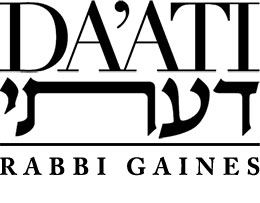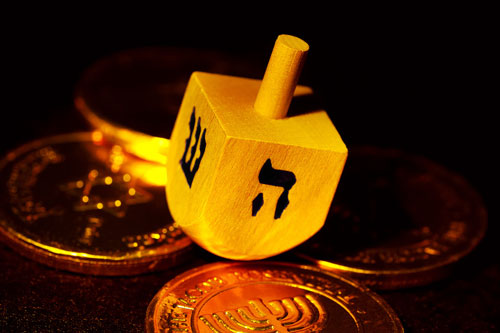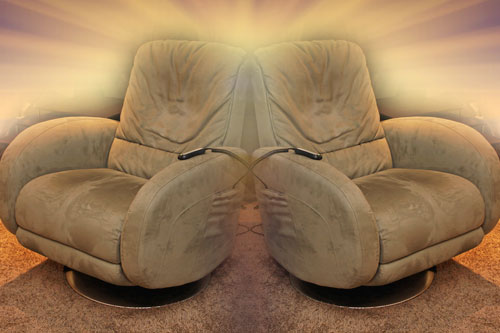 The media likes to tout that Israel’s strength, as a democracy, lies in “secularism” not religiosity. Let’s define secularism shall we? “Secularism” can be aptly defined as a disassociation from any one particular religion or philosophy. But here’s the truth, Israel never had secular roots! On the contrary, Israel” (as a nation, people, and philosophical idea) is founded upon the Torah/Biblical premise of God - God as defined in Torah. Let’s explore that a bit deeper. The Jewish definition of God (God as “Creator” as explained at length in Kabbalah) is “Two opposing yet complementary states of existence arising simultaneously.” In other words, the Biblical God allows for alternate or opposing states of existence to manifest simultaneously and harmoniously, e.g. good and evil. This necessary “duality” allows for all the opposing/contrasting experiences that define the human condition, physically and spiritually.
The media likes to tout that Israel’s strength, as a democracy, lies in “secularism” not religiosity. Let’s define secularism shall we? “Secularism” can be aptly defined as a disassociation from any one particular religion or philosophy. But here’s the truth, Israel never had secular roots! On the contrary, Israel” (as a nation, people, and philosophical idea) is founded upon the Torah/Biblical premise of God - God as defined in Torah. Let’s explore that a bit deeper. The Jewish definition of God (God as “Creator” as explained at length in Kabbalah) is “Two opposing yet complementary states of existence arising simultaneously.” In other words, the Biblical God allows for alternate or opposing states of existence to manifest simultaneously and harmoniously, e.g. good and evil. This necessary “duality” allows for all the opposing/contrasting experiences that define the human condition, physically and spiritually.
For example, good (as a concept) can only be known because, experientially, we have each tasted (endured) its definable opposite, evil. In the same vein, my sense of light (daytime in the physical circadian sense) is defined to my mind precisely because of its experiential contrast, night. From a Torah perspective, all states of duality/contrast, arise from unity (as evidenced by the fact that it takes two opposing states to define one thing, e.g. good and evil are the bookends that define morality). When two opposites (from our perception) are focused toward a mutual objective, they are in truth, one.
From the above we can better understand the land, culture, and people of Israel. In the Torah, Israel is called, “A land flowing with milk and honey” (Deuteronomy 31:20). Explains Kabbalah, “Honey” is linked to judgement (for reasons it would take too long to explain), while “milk” is linked to kindness - two opposites. By stating that milk and honey (two opposing forces) “flow” together, the Torah wishes to inform us that this is a land, a consciousness, wherein opposites are capable of coexisting! And why does Israel, uniquely, possess this quality? Answers the Zohar, because God, Torah, and Israel (the people and land) are one.” Hence, just like God (as Creator) sustains opposites, so too, the nation and land of Israel sustains opposites. It is not secularism, God forbid, that gives Israel its “expansive borders” - the power to unify a variety of people, cultures, and perspectives - no. It’s its (the land’s) intrinsic connection to the Divine (who sustains opposites as explained above.) From the above it should be of no surprise that Israel is the only nation in the whole Middle East that has freedom of press, freedom of internet, freedom of religion, freedom of sexual identity, freedom for women, etc. It is a land of freedom because it’s bound to the people of freedom who are connected to the Torah of freedom that is one with the God of freedom. It’s a Jewish land first and foremost (as evidenced by its archeology, history, and theology), but its integrative all inclusive Divine nature - the power to sustain opposites - welcomes all.
May we all merit to make Israel, its integrative consciousness, part and parcel of our very being.



 Society has many colloquialisms. You know, those neat go-to sayings/articulations you use when the situation requires. Similar to Social Media, these “lines of higher reasoning” are not often fact-checked. This leads to a profound misunderstanding of the English language (those heathens), and a plethora of misappropriated words being clumsily showboated with all the grace of a two legged gazelle. Let’s give an example, shall we? Behold the ever popular, “That is just your theory.” Now If what he/she meant to say was, “That is just a your statement that is, as of yet, unproven,” then the correct wording would have been, “That is just your hypothesis.” There is a major (ginormous in the lingo of my 9 year old daughter) difference between hypothesis and theory. Everybody is capable of making a hypothesis. On the other hand, a theory is the very highest prize and is achieved only by the most accomplished! Sorry, the two are not interchangeable.
Society has many colloquialisms. You know, those neat go-to sayings/articulations you use when the situation requires. Similar to Social Media, these “lines of higher reasoning” are not often fact-checked. This leads to a profound misunderstanding of the English language (those heathens), and a plethora of misappropriated words being clumsily showboated with all the grace of a two legged gazelle. Let’s give an example, shall we? Behold the ever popular, “That is just your theory.” Now If what he/she meant to say was, “That is just a your statement that is, as of yet, unproven,” then the correct wording would have been, “That is just your hypothesis.” There is a major (ginormous in the lingo of my 9 year old daughter) difference between hypothesis and theory. Everybody is capable of making a hypothesis. On the other hand, a theory is the very highest prize and is achieved only by the most accomplished! Sorry, the two are not interchangeable.  Chanukah is upon us and in addition to the delectable smell of potato latkas cooking in the kitchen and the beautiful lights of the Chanukiah (Menorah possessing 8 branches) glistening from windows lining the streets, the laughter of children can be heard echoing in the hallowed halls of many a home as they busily spin the 4 sided top we call (in Yiddish) Dreidal. Dreidal (Sevivon in Hebrew) is an ancient game that is simultaneously simple and complex, i.e. simple to learn and play (even a very little child can do it), but complex (profound) in its meaning (even learned scholars contemplate its meaning).
Chanukah is upon us and in addition to the delectable smell of potato latkas cooking in the kitchen and the beautiful lights of the Chanukiah (Menorah possessing 8 branches) glistening from windows lining the streets, the laughter of children can be heard echoing in the hallowed halls of many a home as they busily spin the 4 sided top we call (in Yiddish) Dreidal. Dreidal (Sevivon in Hebrew) is an ancient game that is simultaneously simple and complex, i.e. simple to learn and play (even a very little child can do it), but complex (profound) in its meaning (even learned scholars contemplate its meaning). Kindness comes in many forms, but no matter the chosen expression (the form of kindness one chooses to perform), it all can be classified as one of two types: 1) Revealed kindness or 2) Hidden kindness. Let’s define them. Revealed kindness means “conspicuous,” or, revealed to the eyes of all. Imagine, for example, a man strolling into the City of Hope (hospital specializing in pediatric cancer) and handing the faculty $5,000,000 dollars. I am pretty sure that by dawn, every local news agency would be reporting the benevolent act. And why? Because they were privy to it - they witnessed the giver give his gift. Now what if that same kindhearted gentleman placed the $5,000,000 in a briefcase and had it dropped off by a middleman (he never appears on the scene); would the news run to report it? Well, yes, but there would be no person/benefactor to whom they could point their finger - the giver remains hidden.
Kindness comes in many forms, but no matter the chosen expression (the form of kindness one chooses to perform), it all can be classified as one of two types: 1) Revealed kindness or 2) Hidden kindness. Let’s define them. Revealed kindness means “conspicuous,” or, revealed to the eyes of all. Imagine, for example, a man strolling into the City of Hope (hospital specializing in pediatric cancer) and handing the faculty $5,000,000 dollars. I am pretty sure that by dawn, every local news agency would be reporting the benevolent act. And why? Because they were privy to it - they witnessed the giver give his gift. Now what if that same kindhearted gentleman placed the $5,000,000 in a briefcase and had it dropped off by a middleman (he never appears on the scene); would the news run to report it? Well, yes, but there would be no person/benefactor to whom they could point their finger - the giver remains hidden.  “It all started with a chair.” So declared actress Ellen Page in the critically acclaimed film, Juno. Now in Juno, the whole teenage drama (Juno’s pregnancy) unfolds around one irresponsible evening involving, you guessed it, that chair. Was there a message? Most assuredly: don’t leave your teenage daughter unsupervised! As a Rabbi, I must confess, I never thought I would be borrowing a line from a film about teenage angst, but here it goes, “It all started with a chair.” Let me explain.
“It all started with a chair.” So declared actress Ellen Page in the critically acclaimed film, Juno. Now in Juno, the whole teenage drama (Juno’s pregnancy) unfolds around one irresponsible evening involving, you guessed it, that chair. Was there a message? Most assuredly: don’t leave your teenage daughter unsupervised! As a Rabbi, I must confess, I never thought I would be borrowing a line from a film about teenage angst, but here it goes, “It all started with a chair.” Let me explain.

